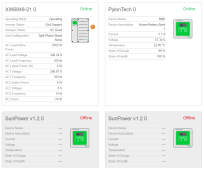400bird
Solar Wizard
I need to get back to testing. I connected the can wiring. They were talking, Schneider was reporting SOC.
I set a critical BMS fault and Schneider fully powered down, that's good.
But, I need to get time to get back to this. Next step is try limiting charge/discharge current and set voltage targets.
Work has been busy and I've had other priorities. But, I think this is coming back up to the top of the pile for some attention soon.
I set a critical BMS fault and Schneider fully powered down, that's good.
But, I need to get time to get back to this. Next step is try limiting charge/discharge current and set voltage targets.
Work has been busy and I've had other priorities. But, I think this is coming back up to the top of the pile for some attention soon.



